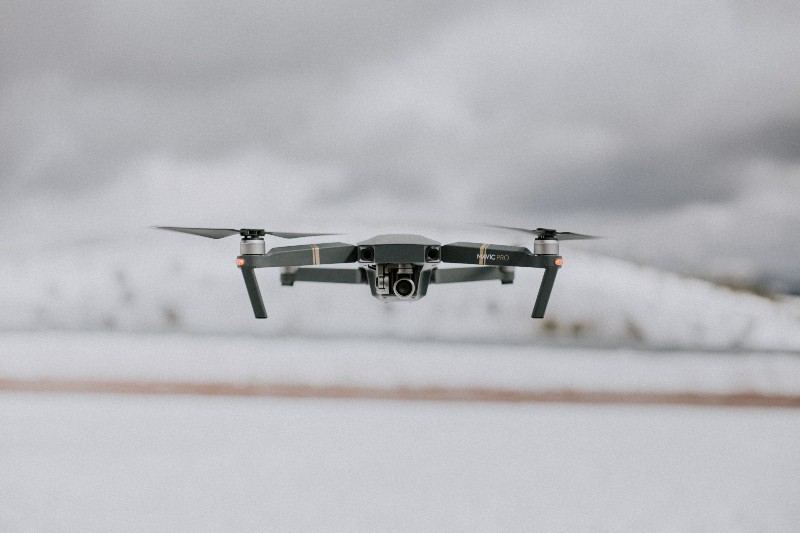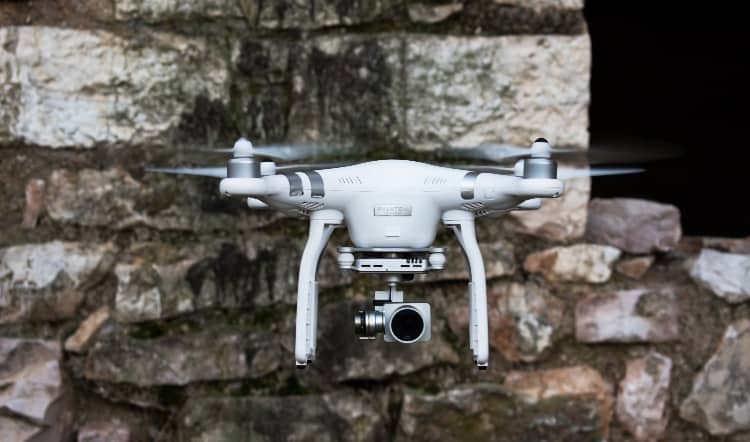Want to Make Sure Your DJI Drone Isn’t Sharing Your Data? Here’s What to Do
BY Zacc Dukowitz
5 June 2019DJI is in the news again with concerns around privacy and unauthorized data sharing.
According to CNN, the Department of Homeland Security (DHS) recently issued an internal alert warning that “Chinese-made drones” might be sharing sensitive flight data with manufacturers in China, where the data could be accessed by the Chinese Government.
The alert doesn’t name DJI explicitly, but given that DJI is by far the largest drone manufacturer in China—not to mention the world—the connection is not hard to make.
How to Make Sure Your DJI Drone Isn’t Sharing Data
Given that, at last count, DJI holds 74% of the consumer drone market, simply not using a DJI drone due to privacy concerns isn’t realistic for most of us.
And let’s face it—DJI’s drones are everywhere, and with good reason. They’re some of the best drones on the market, competitively priced, with a nice mix of features that allows them to be used by both prosumers and amateurs, and professionals, too.
But let’s say you own a DJI drone and have concerns about what’s happening with your data—what can you do?
Here’s how to turn off data sharing on your DJI drone
There are two ways to ensure that you’re not sharing any data at all with DJI:
1) Use Local Data Mode (LDM)
To activate local data mode, open the DJI Pilot app, click on “activate LDM mode,” and enter your password. (If you want to deactivate this mode, you’ll need to enter your password again.)
Note: It appears that Local Data Mode is only available for those flying with the DJI Pilot app on the CrystalSky monitor, or for certain Android tablets. If you’re flying with iOS or the DJI Go app and can’t find Local Data Mode, then you can use the second option listed below to make sure you’re not sending data back to DJI.
2) Turn off Wifi
If you’re flying with iOS or the DJI Go app you can turn your internet connection off to ensure that your not sharing data. Turning off your internet connection effectively does the same thing as going into Local Data Mode, since LDM blocks all internet data.
Automatic Data Sharing
According to DJI, certain types of data get shared automatically and other types of data only get shared if the user decides to share them. (Of course, if you’re using one of the two options listed above then no data is getting shared at all.)
Of the three types of automatically-shared data listed below, sharing can only be turned off for the first two.
Data that Gets Shared Automatically
- App Performance Data—collected and sent to DJI to report bugs or usage statistics. You can deactivate the transmission of this data in the DJI GO app settings.
- User Experience Data—collected and sent to DJI (this refers to basic information about the drone’s usage, including times of flight, flight duration, flight distance, distribution of flight attitudes, etc.). You can deactivate the transmission of this data in the flight control app settings.
- Location Check Data—collected by DJI drones and used to determine the location where the drone is operating based on GPS data, IP address, and/or mobile network ID (MCC ID). This data is used to update location-specific geofencing flight limitations and warnings and to determine the country in which the drone is operating in order to make sure its compliant with local laws. This data sharing cannot be turned off by itself but can be stopped by using one of the two options listed above (i.e., by either using LDM or by turning off the internet connection).
Data You Can Choose to Share
- Photography/Videography Data—includes photos and video recorded by the drone’s main camera sensors. This data is not shared automatically, but may be shared manually if you so choose.
- Telemetry Data—refers to data recorded regarding a drone’s flight, including altitude, speed, distance, location (e.g., GPS coordinates). This data is not shared automatically, but may be shared manually if you so choose.
- Obstacle Avoidance Data—recorded by the obstacle avoidance image sensors (e.g., the two “eyes” at the front of a Mavic or a Phantom 4). This data is not shared automatically, but may be shared manually if you so choose.
[The above information was taken from this page on privacy on the DJI website.]
The bottom line is that DJI users do have options when it comes to keeping their data private, but they have to take proactive steps to ensure privacy.
DJI and Privacy: A Brief History
Privacy concerns aren’t new to DJI.
In 2017, the U.S. Army issued a blanket ban of all DJI drones and summarily destroyed or got rid of any DJI drones currently in use. At the time, there were allegations that DJI’s drones were configured to collect and send user data back to DJI without the user knowing, which contributed to the ban.
DJI first responded to these concerns by releasing a privacy mode for its drones (the Local Data Mode referenced above), which allowed pilots to fly without any data being shared.
But then, in late 2017, news broke that the Department of Homeland Security had issued an internal memo claiming that DJI was using its drones to collect sensitive information in the U.S. and share it with the Chinese Government (sound familiar?).
To combat these new allegations, DJI hired San Francisco-based Kivu Consulting, Inc. to do a thorough independent review of their data collection practices. The review basically absolved the company of accusations regarding malicious or negligent data sharing practices, although it did note that some user data is transmitted by default unless a user opts out.
Kivu’s analysis of the drones and the flight control system (drone, hardware controller, GO 4 mobile app) concluded that users have control over the types of data DJI drones collect, store, and transmit.
– Douglas Brush, Director of Cybersecurity Investigations at Kivu Consulting, Inc.
It’s hard to say what, if anything, will come of the recent alert issued by the DHS regarding Chinese-made drones—but, regardless of the type of drone you fly, it’s a good idea to be aware of the options you have when it comes to your data.





